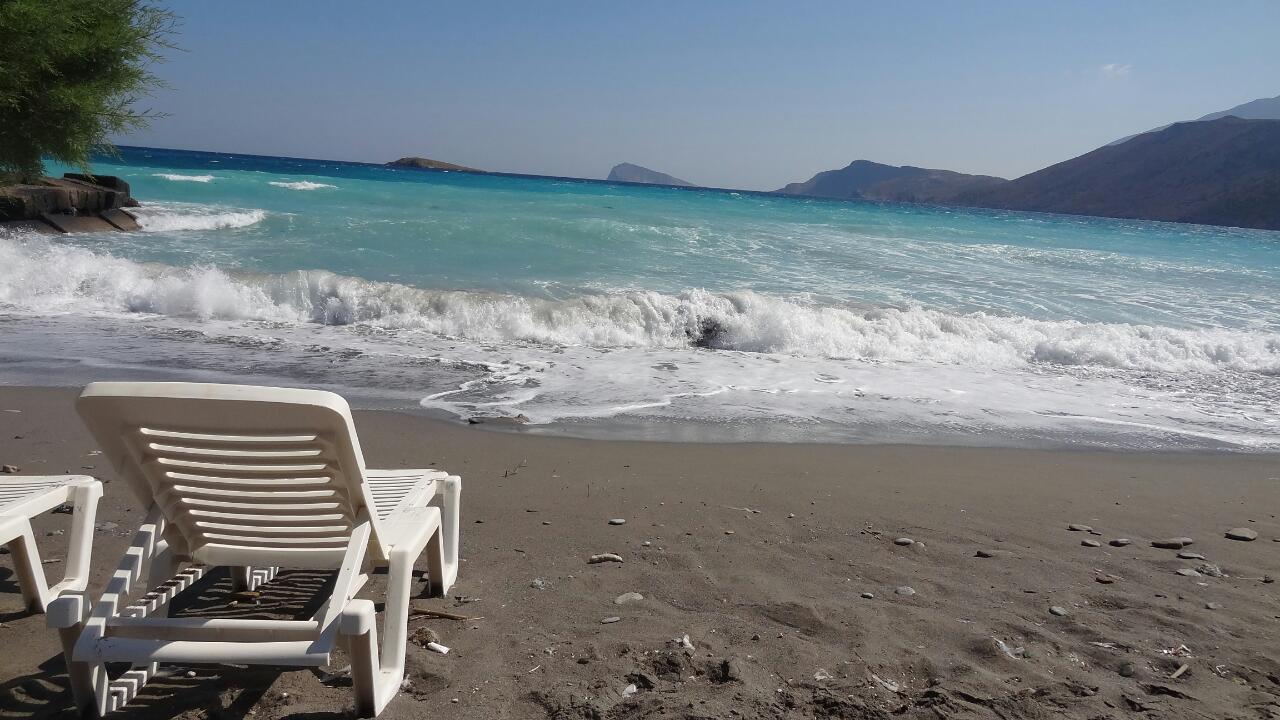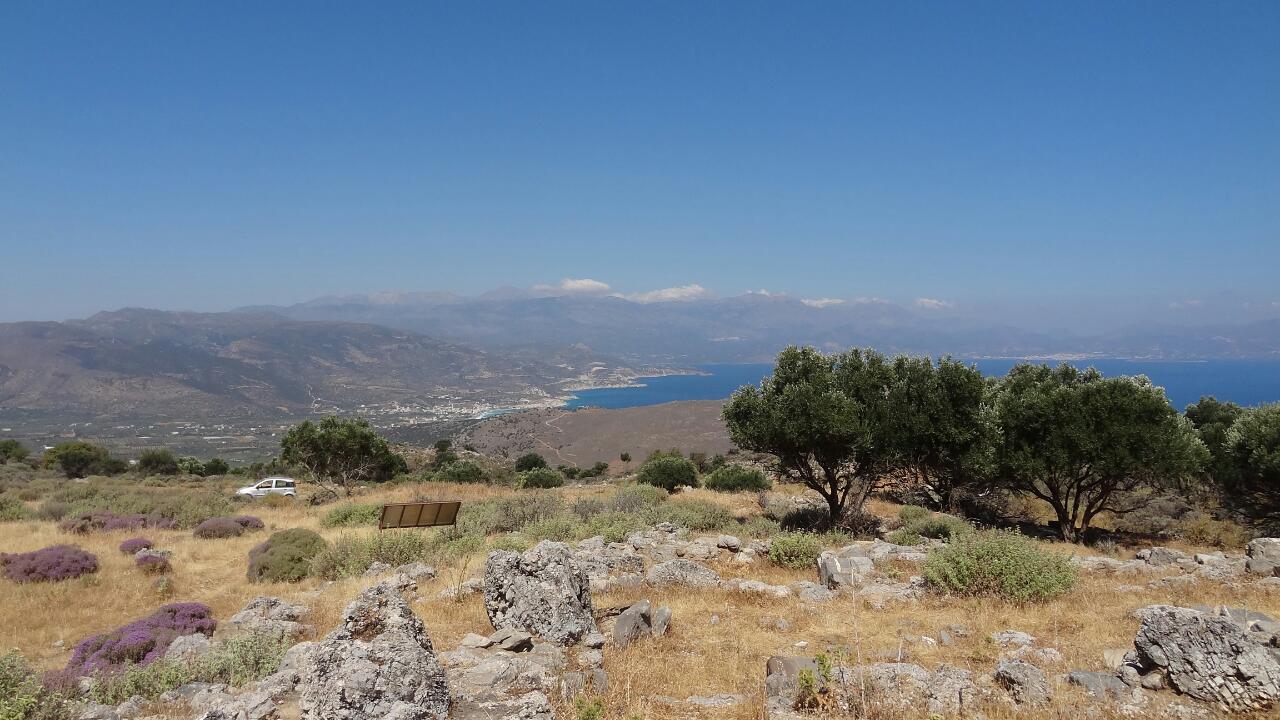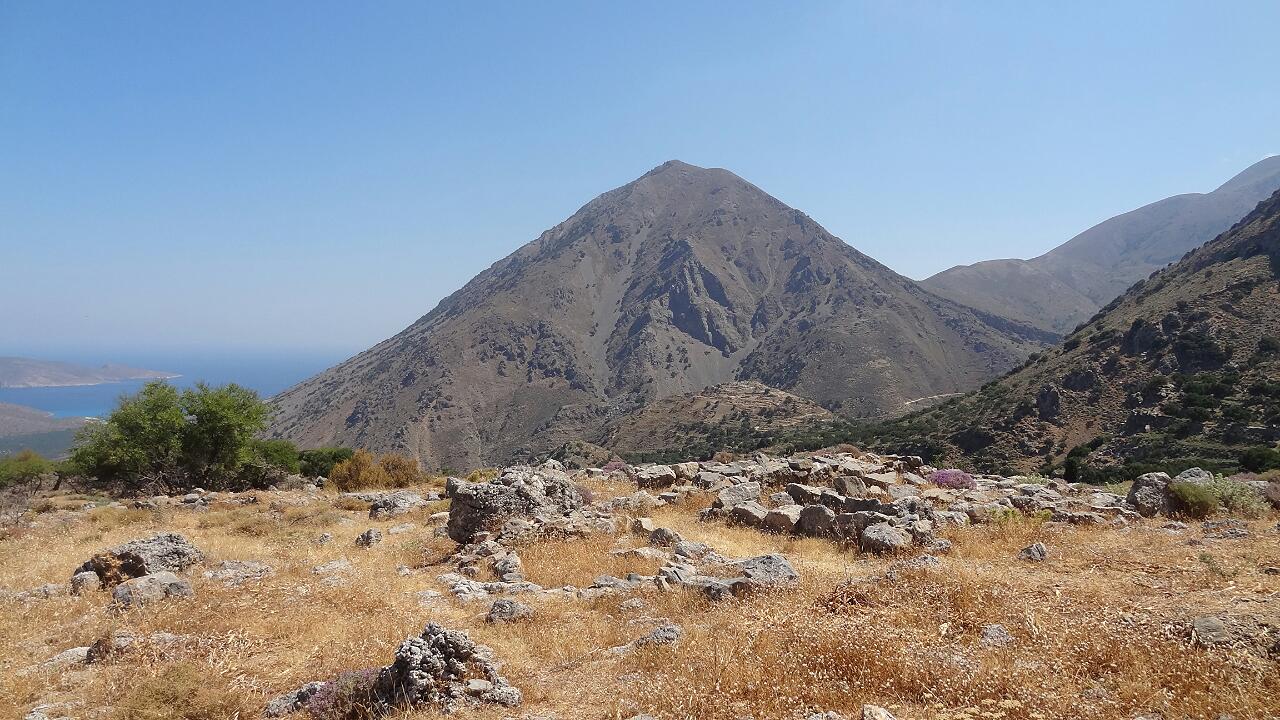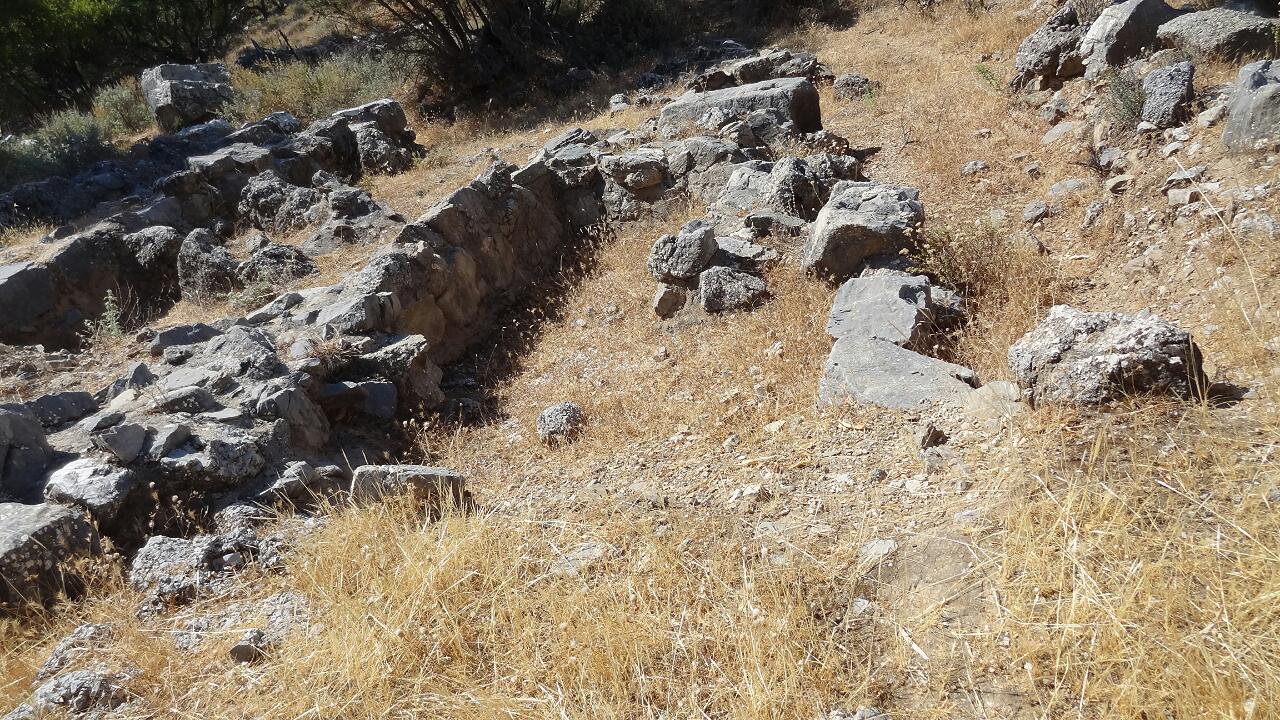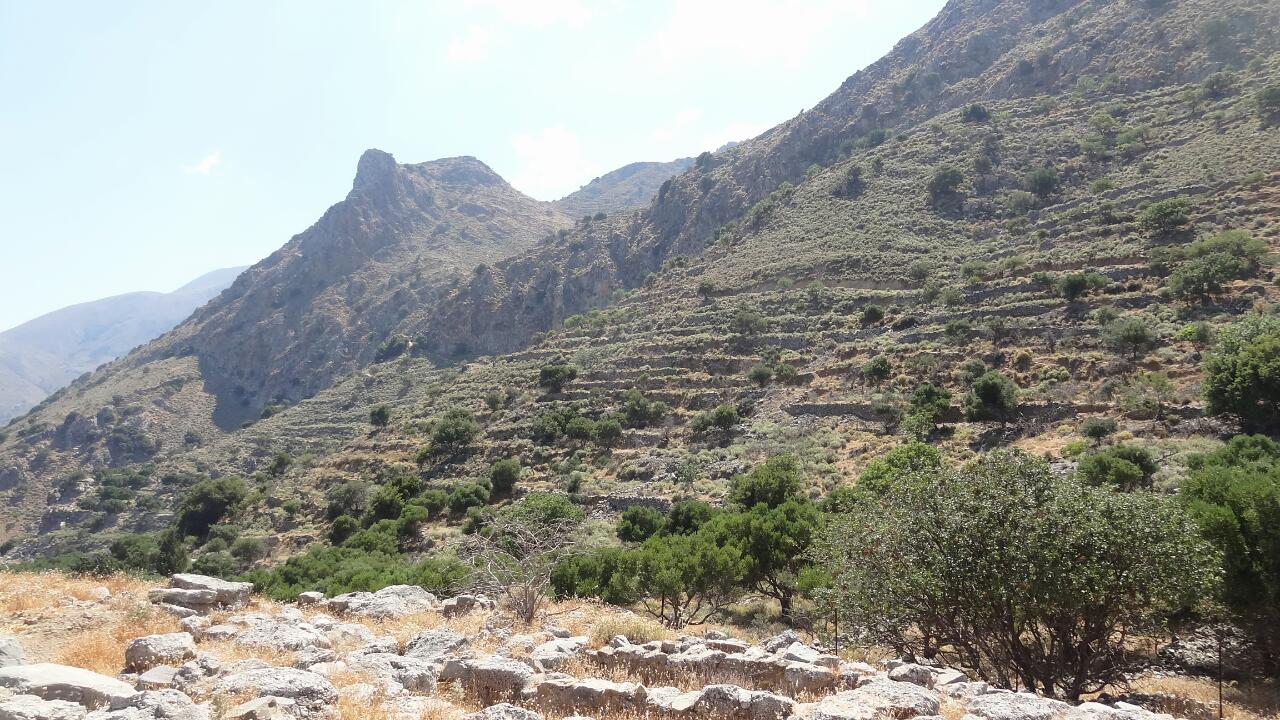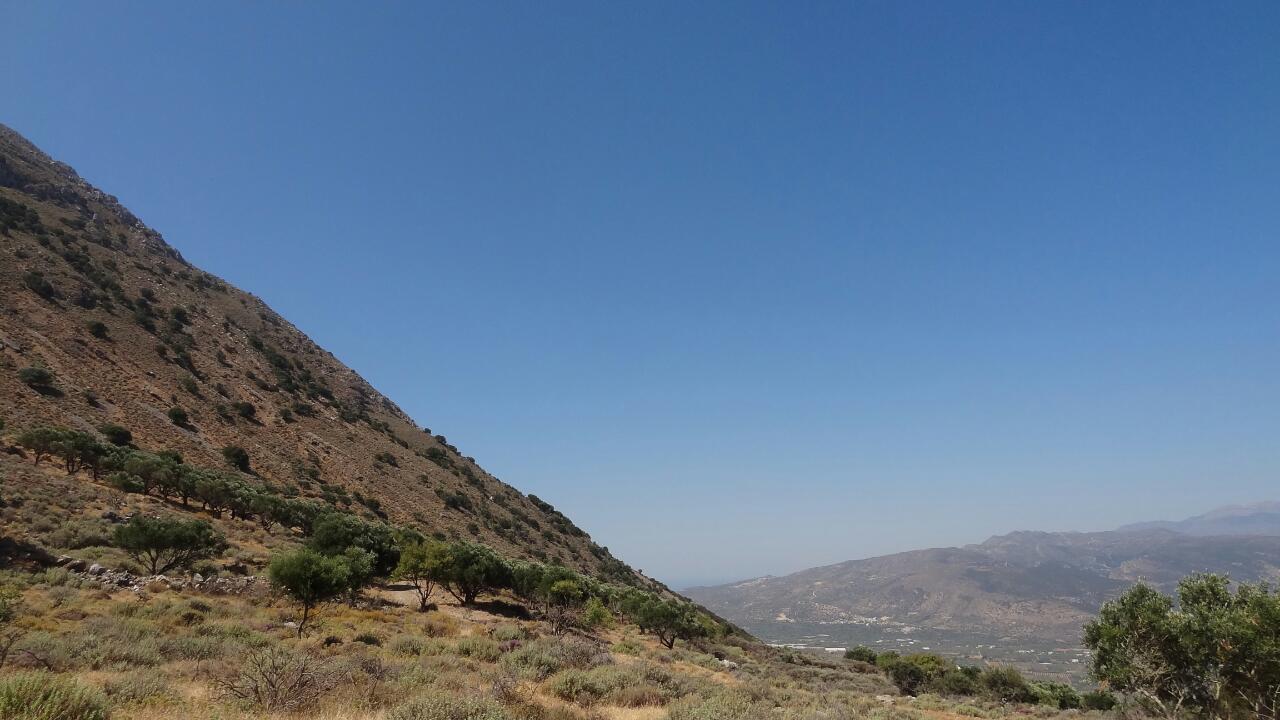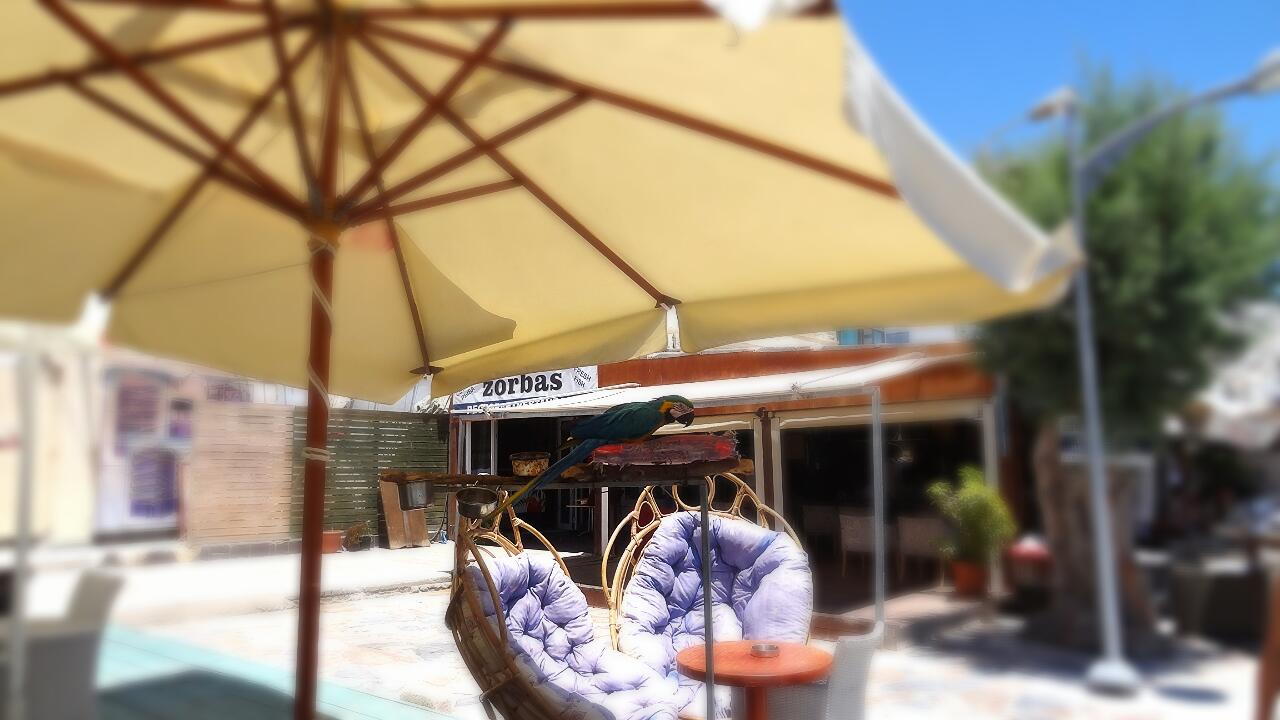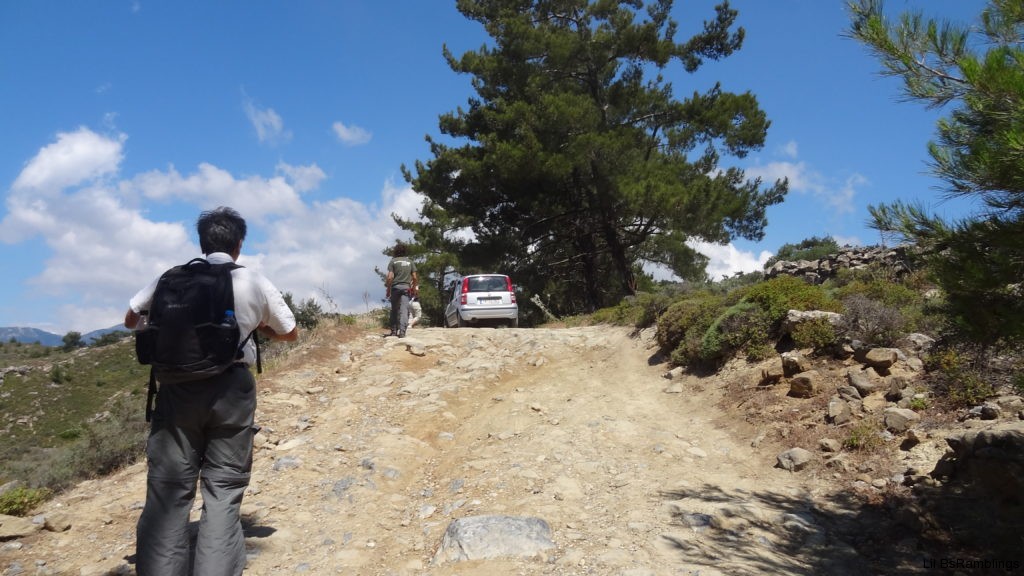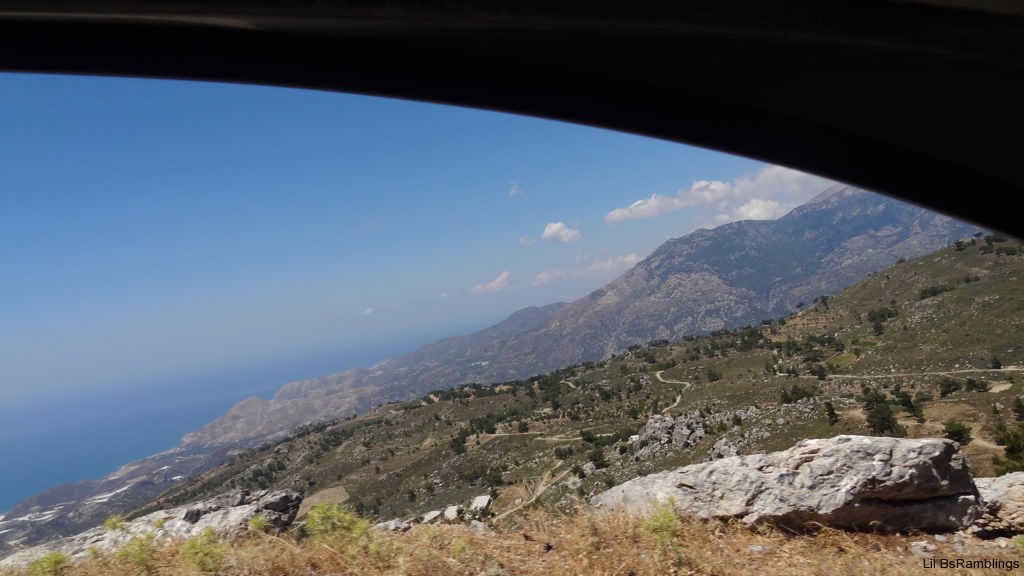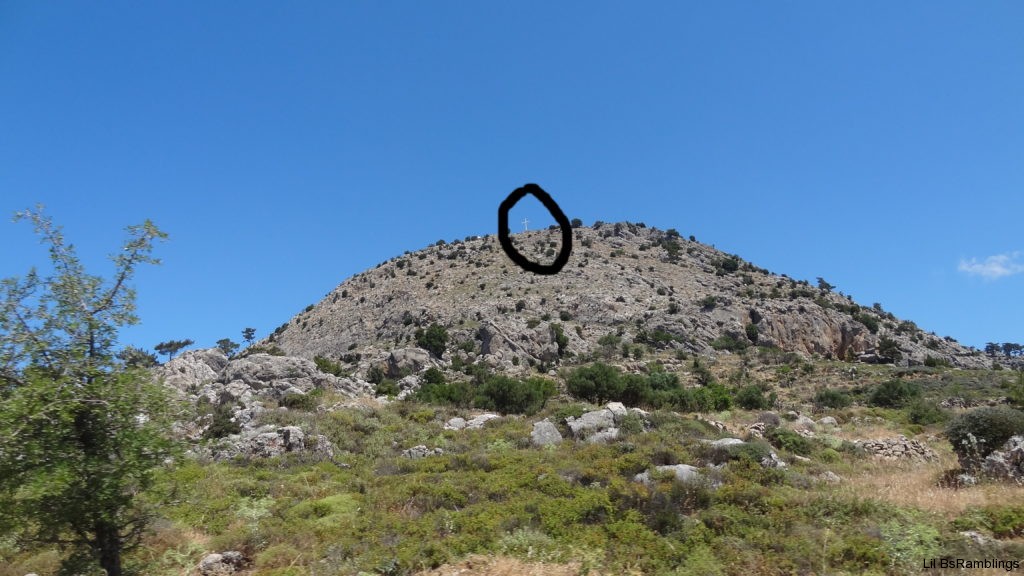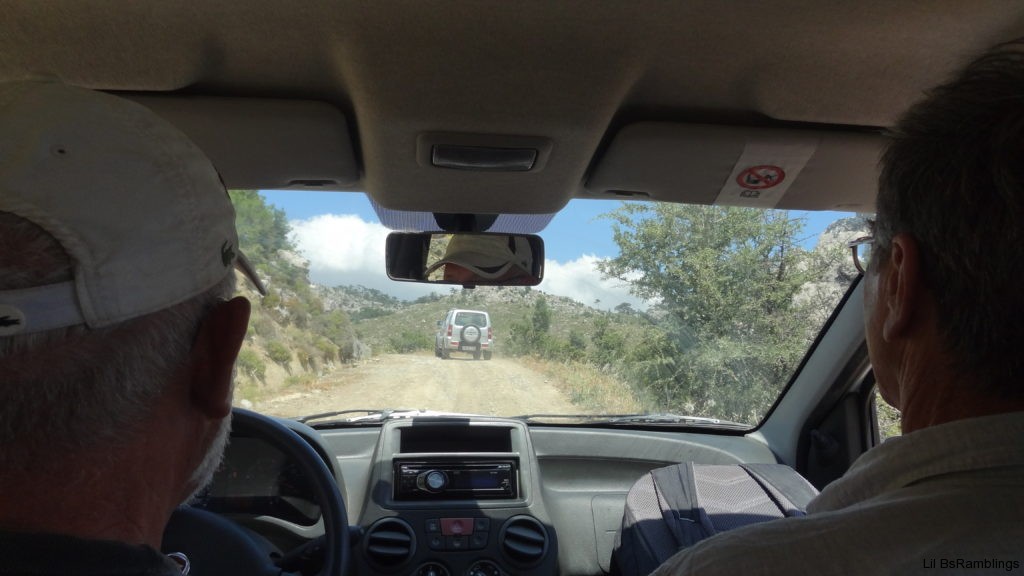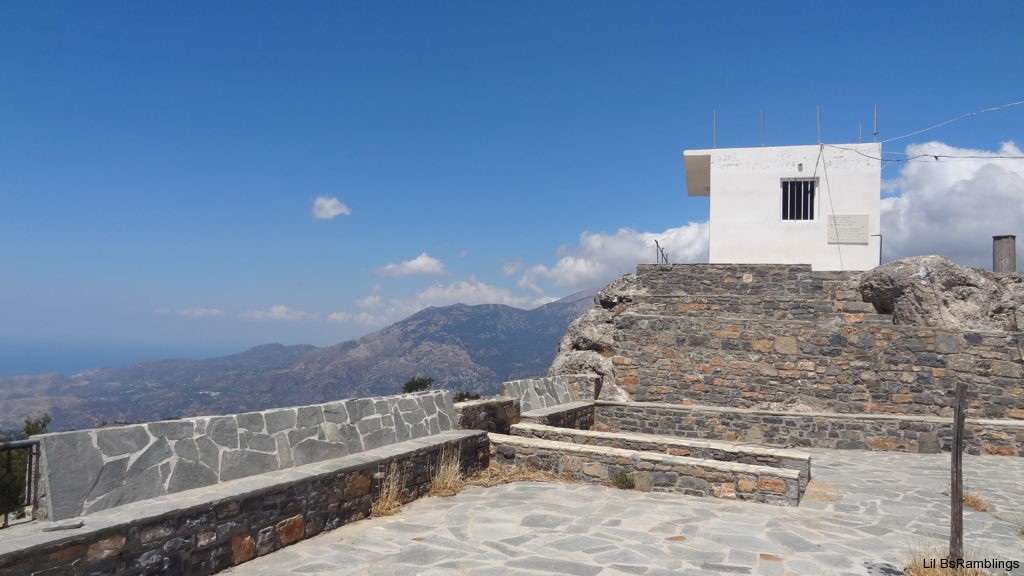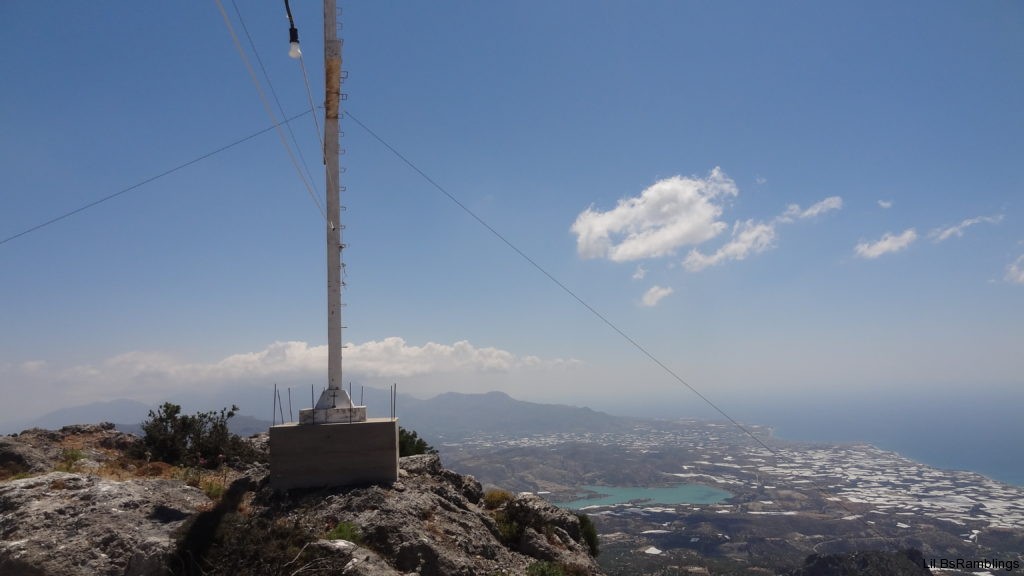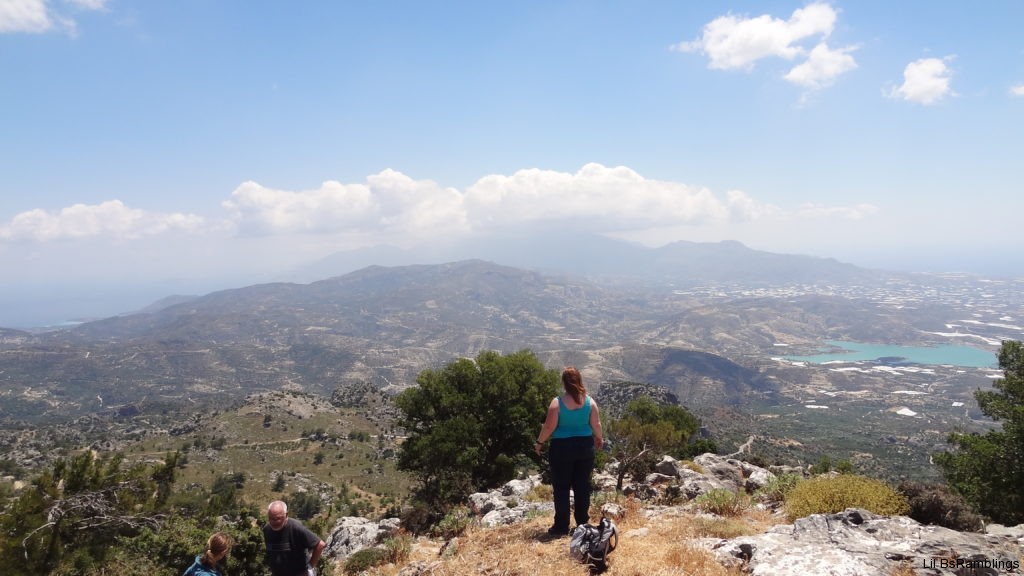Kavousi Vronda and the Parrot Place
Ah, the beach… It seems like I will never get sick of watching the waves roll in…
But I can’t sit around watching the waves all my life, not with so much exploring to do. That is a picture of where I met my professor and two friends to go exploring Crete at 10:30 this morning. After admiring the waves for a few minutes (and because it was morning when all of us would rather have still been relaxing) we crawled into my professor’s rental car and he drove to Kavousi, a larger town just up the peninsula from where we are living, and turned up a winding mountain road to go up the mountain. Eventually we got out and walked through trails that had grown over with shrubs to get to the lesser known archeological site of Kavousi Vronda. It’s not as impressive as Gournia, the site I’m helping do the paperwork for, but it does have some awesome views.
According to my professor, who played tour guide for this trip, Egyptian manuscripts speak of attacks from “sea people” which were a lot of different people that had taken to the sea for various reasons. People think that some of those nomads stopped in Crete and set up villages far from the sea. Vronda is thought to be one of those villages. looking beyond the little rental car you can see how far from the water Vronda is set.
Beyond the site on the other side from the picture above it (maybe to the side instead of directly behind the site) is the other Bronze Age refugee camp. At some point thousands of years ago they gave up the stone houses at Vronda for the higher and more inland site at the peak beyond Vronda. (If you look closely, on the closer peak you can see a late Bronze Age village of Asoria, which is an active dig, on the peak between the two refuge sites which are no longer being studied.) At some point after Vronda was abandoned, it was used as a cemetery and there are a few tombs on the site, one of them was found inside the abandoned shrine. Most of the pottery and figurines of the shrine were found in a heap down the hill a bit from the shrine as if the grave diggers had merely thrown the artifacts down the hill to get them out of the way.
Here is an image of the grave they dug in the shrine. On the left is the ledge that they had put most of the figurines to the goddess (often called the snake goddess but modern scholars think that the snake was merely a reference to her dominion over the underworld, not her only power) and various memorials to dead family and pets. The Minoan people seem to have worshiped a great goddess and something about bulls (bull leaping seems to have been their national sport and the “horns of consecration” are found in most of the important buildings) and who ever lived in Vronda seems to have adopted that religion since a lot of goddess figurines were found in the heap from the shrine.
One thing I find fascinating about Crete is how the mountains are covered in terraces. Now a days the terraces are used to grow olive trees but in Gournia there are terraces from the dark ages that probably were part of vineyards to fill the wine jugs made at the site. That means that over three thousand years ago people were carrying bricks or stones from place to place to bend the landscape to their desires. The abilities people had before cars or modern technology fascinates me.
Of course, if the refugees didn’t farm then there was plenty of land for sheep and goats to graze around Vronda.
After about an hour of wondering the site, reading the plaques and listening to my professor talk about what had been found and what it said about the people that lived at Vronda we piled into the car and headed to the nearby city of Ierapreta. We found a parking space and walked to the archeological museum in that city. (Here I should pause to mention that there are very few parking lots in Crete. People just park on the side of the road or big stores may buy extra lots to create convenient parking lots for their customers.) No one is allowed to take pictures there (since many of the finds are yet to be published and therefore it’s rude to put up a picture of an item online before it has been officially studied and published for other archeologists to read about first) but we got to walk through it. Gournia is an early Minoan city so I get to see a lot of what is called Vassiliki ware and crude decoration on the pottery I see every day so it was very nice to see the fancy decorations that most people think of as Minoan art. There was also some parts Roman statues and a complete Persephone statue but I was mostly interested in their Minoan pieces and the tubs that the Minoans buried their dead in.
After we got done in the small museum I was hungry and suggested we eat so we went to the “parrot place” as everyone on site calls it and ordered drinks.
You can guess by the picture why it is called the parrot place. It actually has a parrot perched by the side walk. After we had ordered our drinks (an iced tea, a fresh squeezed orange juice, a decaf coffee with ice cream, and a beer) one of my friends noticed that we were at the wrong parrot place. Two places on that boardwalk had parrots and they were separated by a single cafe! The one we stopped at had this blue parrot laying on his pillow in the high winds next to the sidewalk area but the other one, run by a friend of my professor, had a big red parrot that had been moved out of the wind into the cafe so we had walked by it! I expected we were getting food but after an hour or so of talking and sipping our drinks we got up, paid and got back in the car. My professor dropped us all off at the beach and we went our separate ways, me to one of the restaurants on the beach, my friend to his place, and my other friend to the beach with her book and a take-out salad. Ah, the beach…
